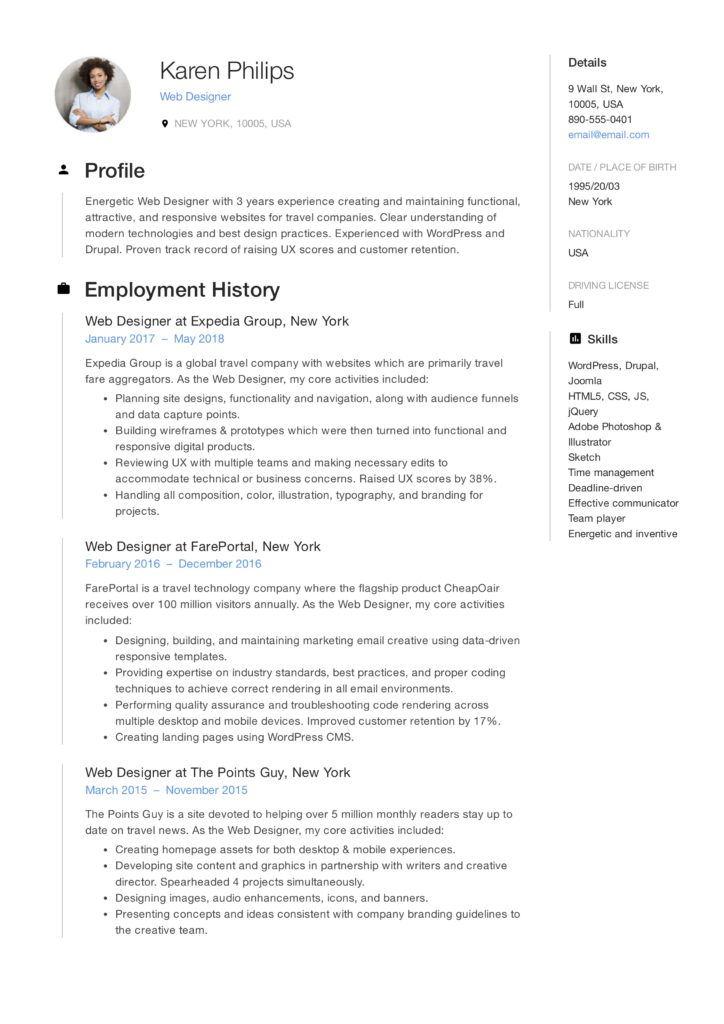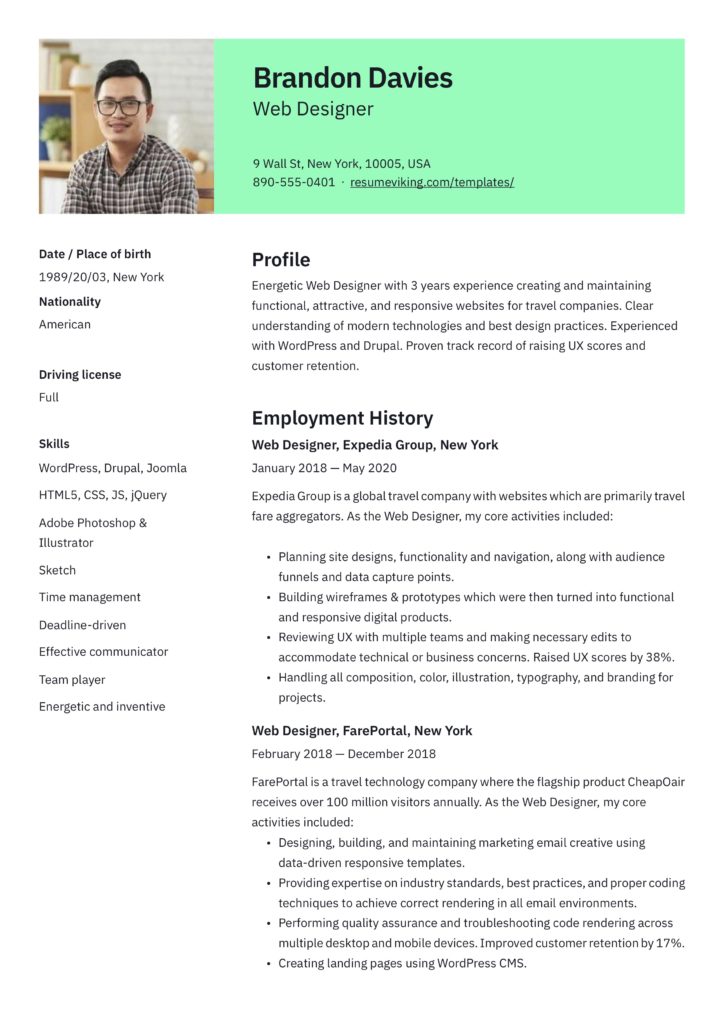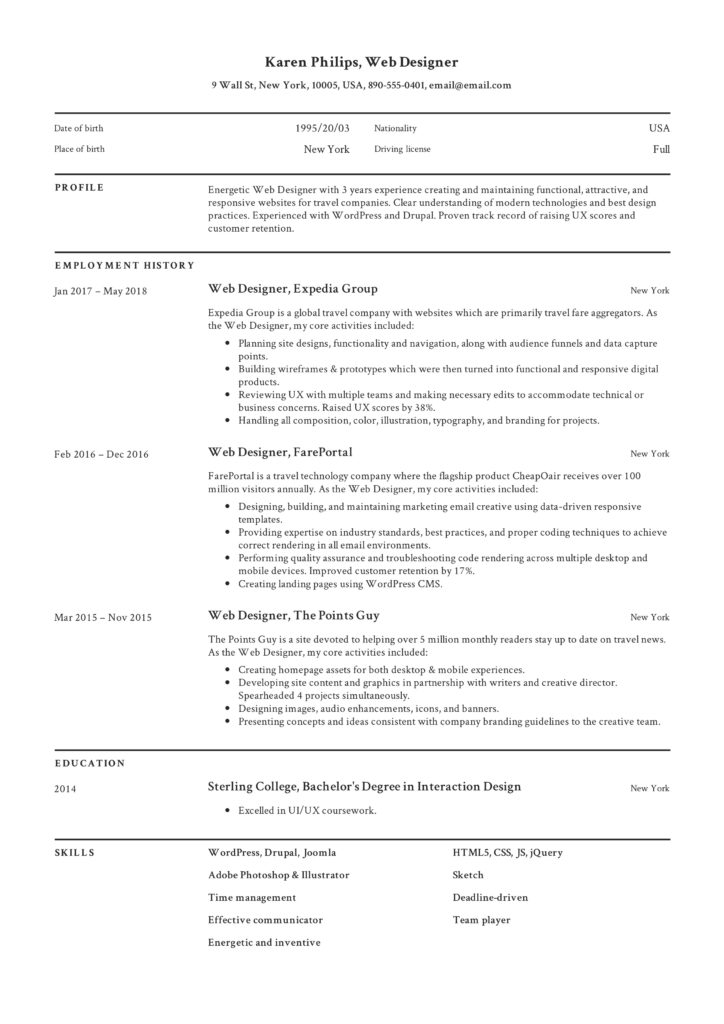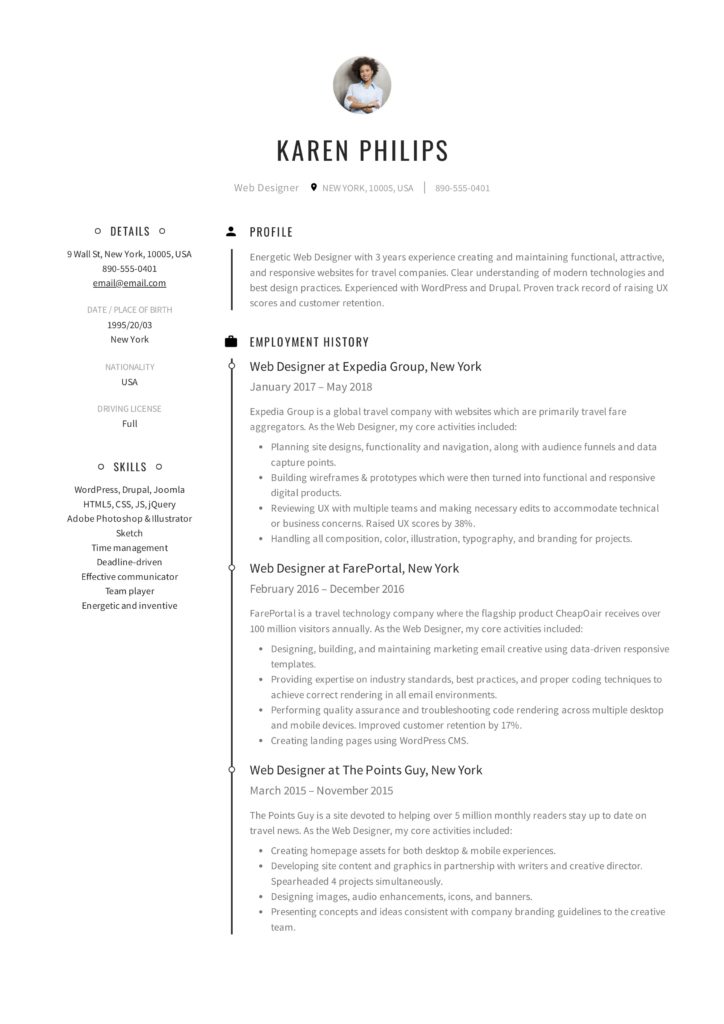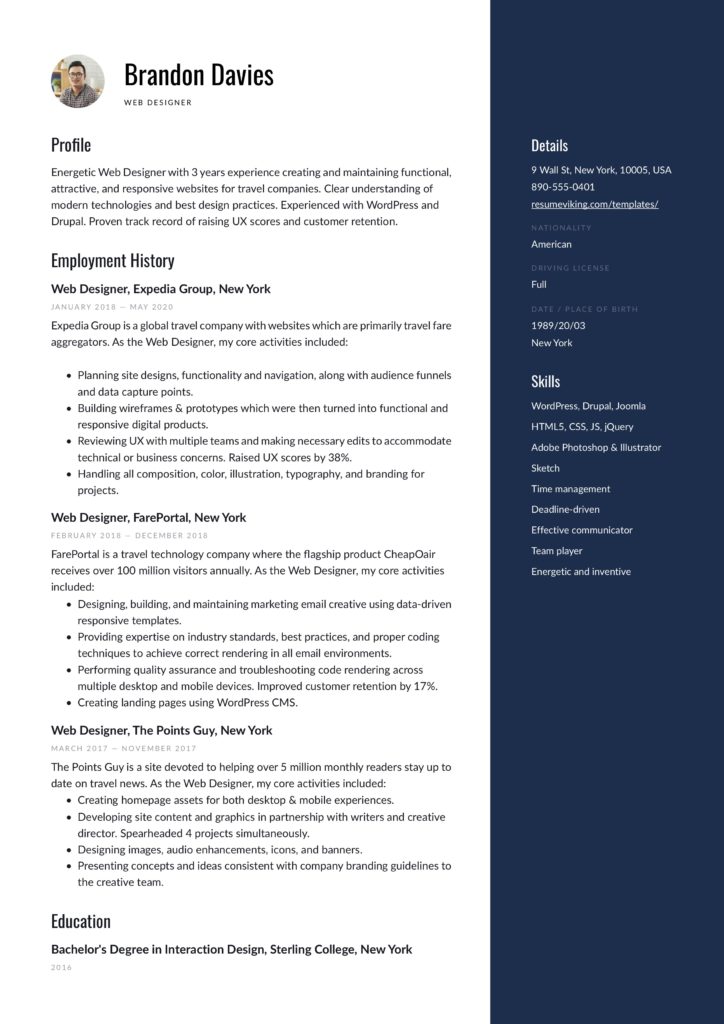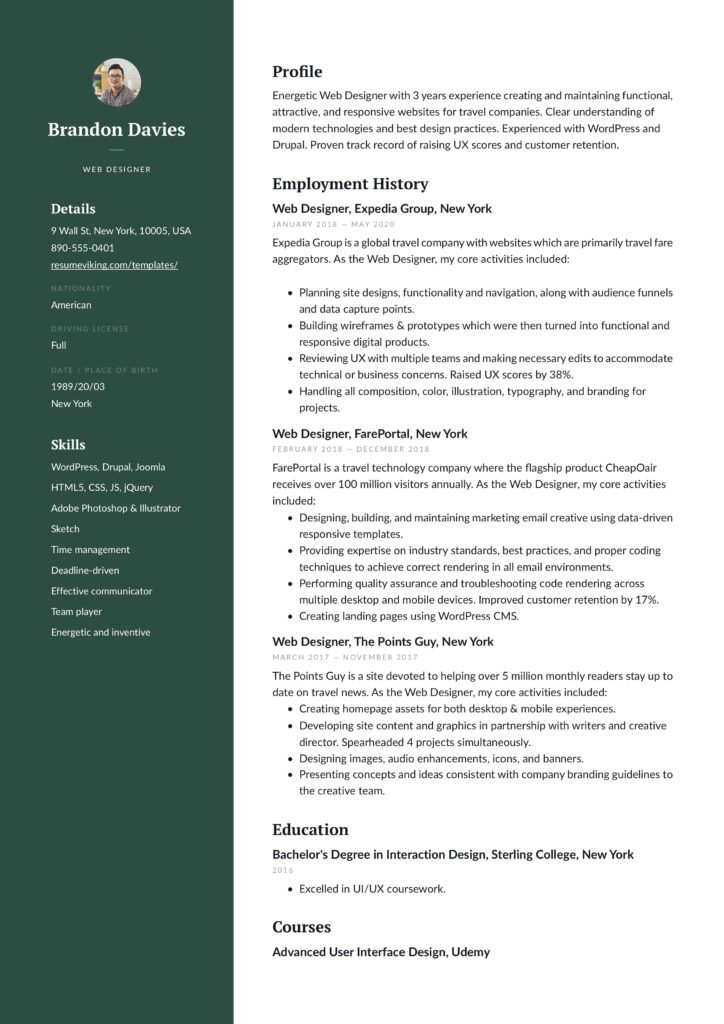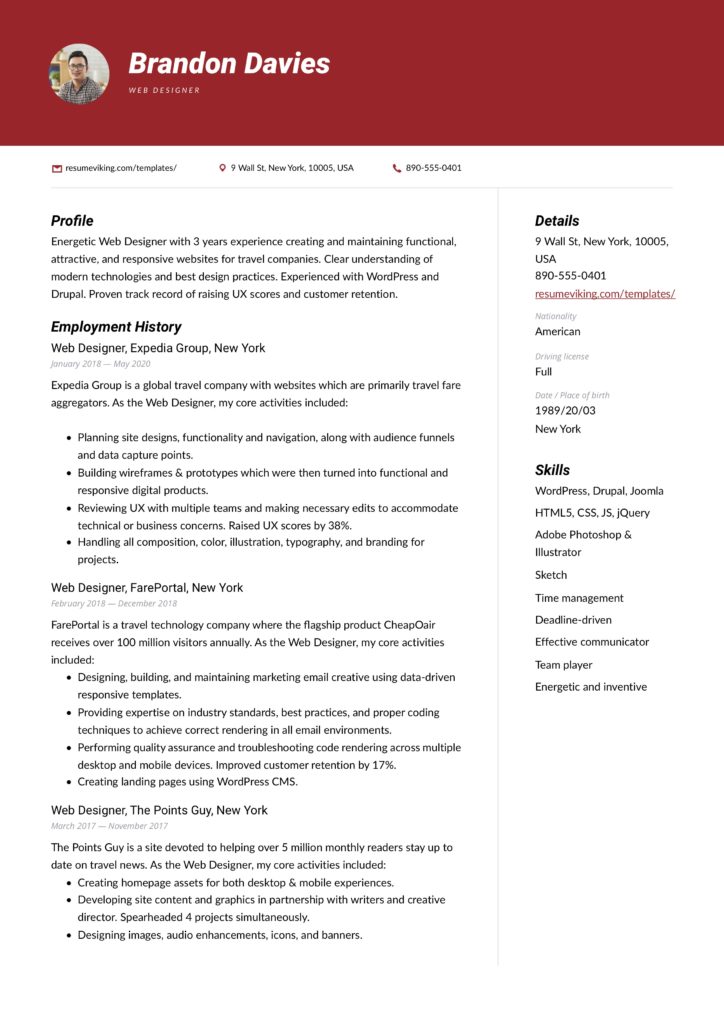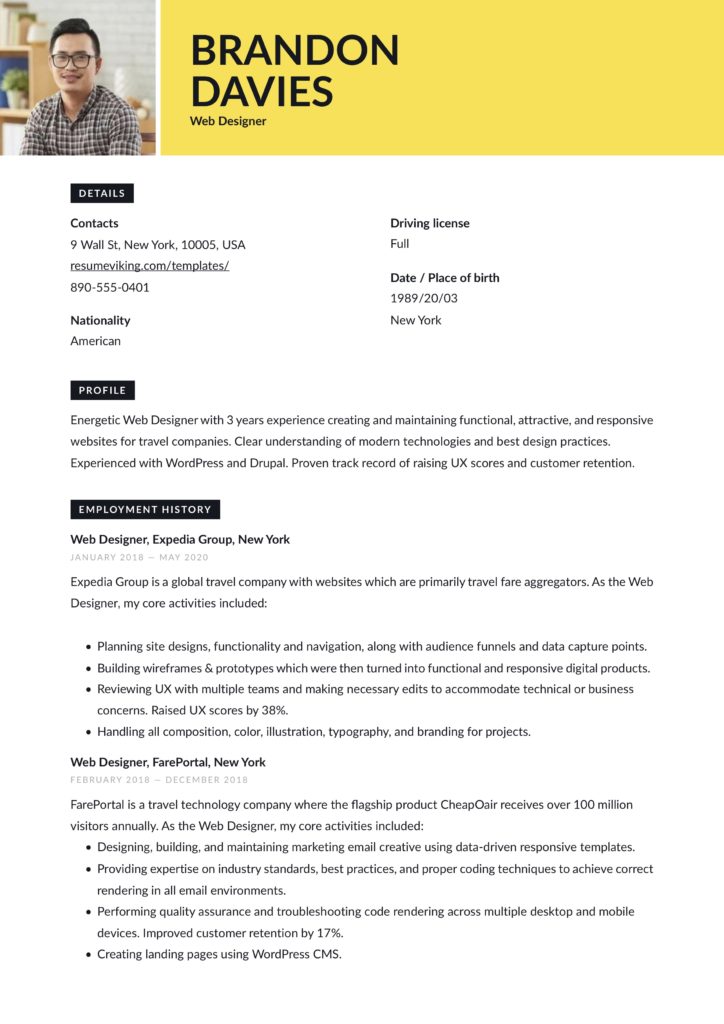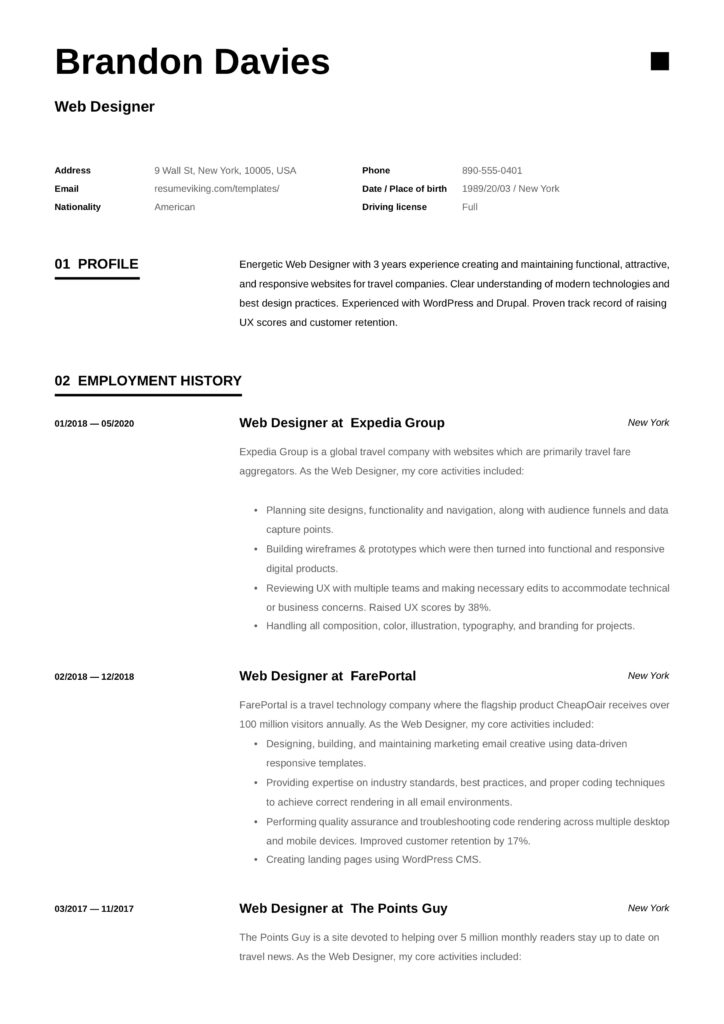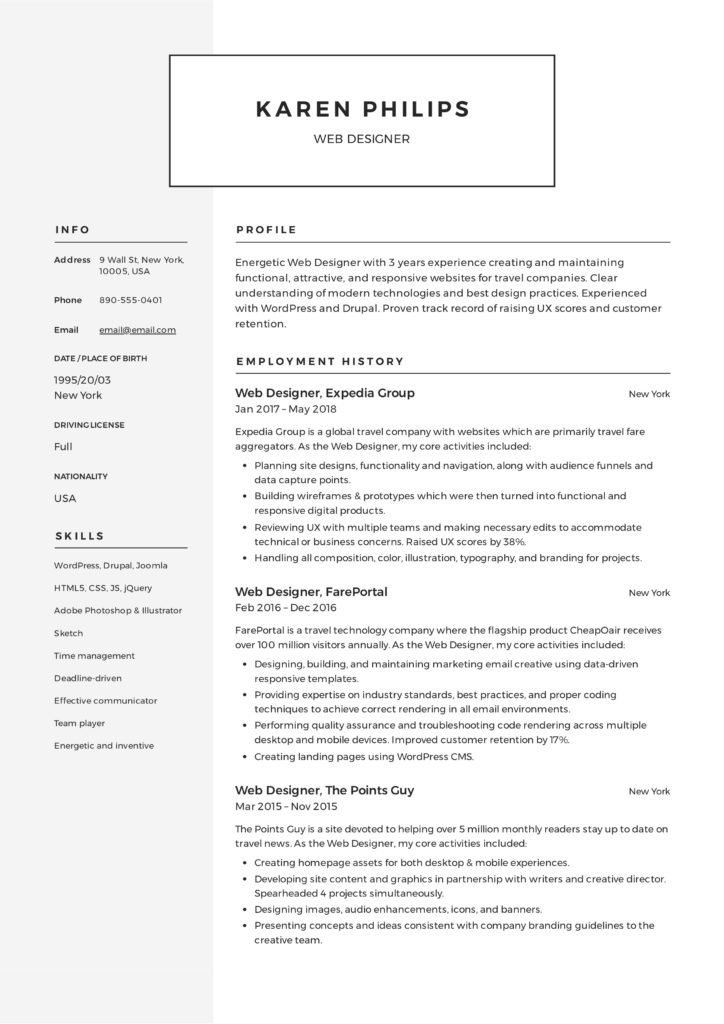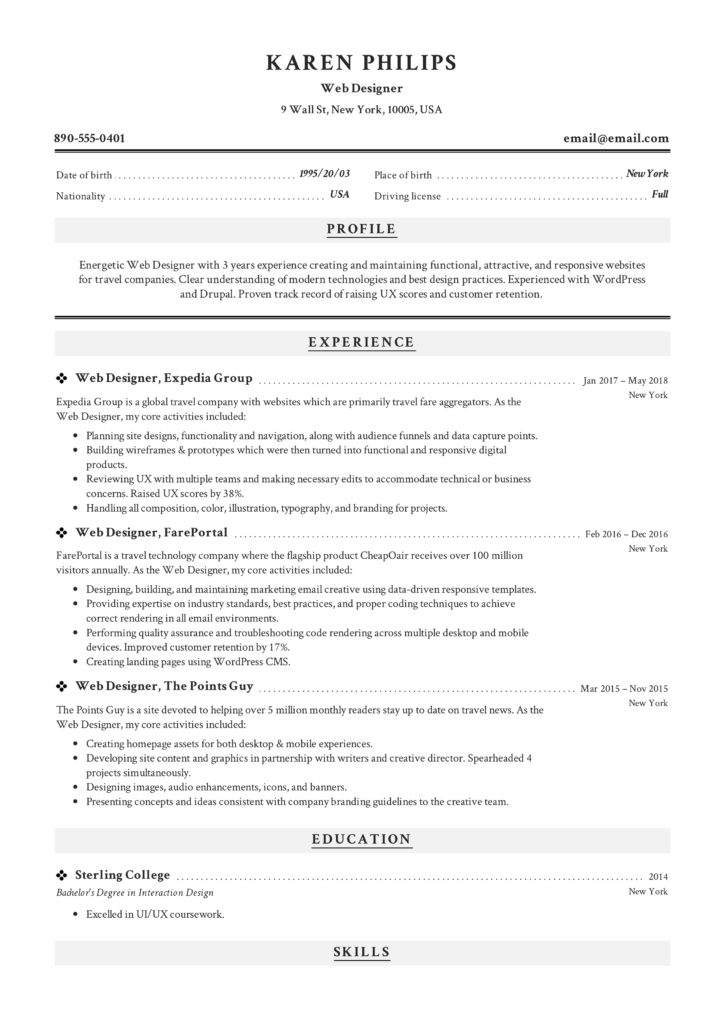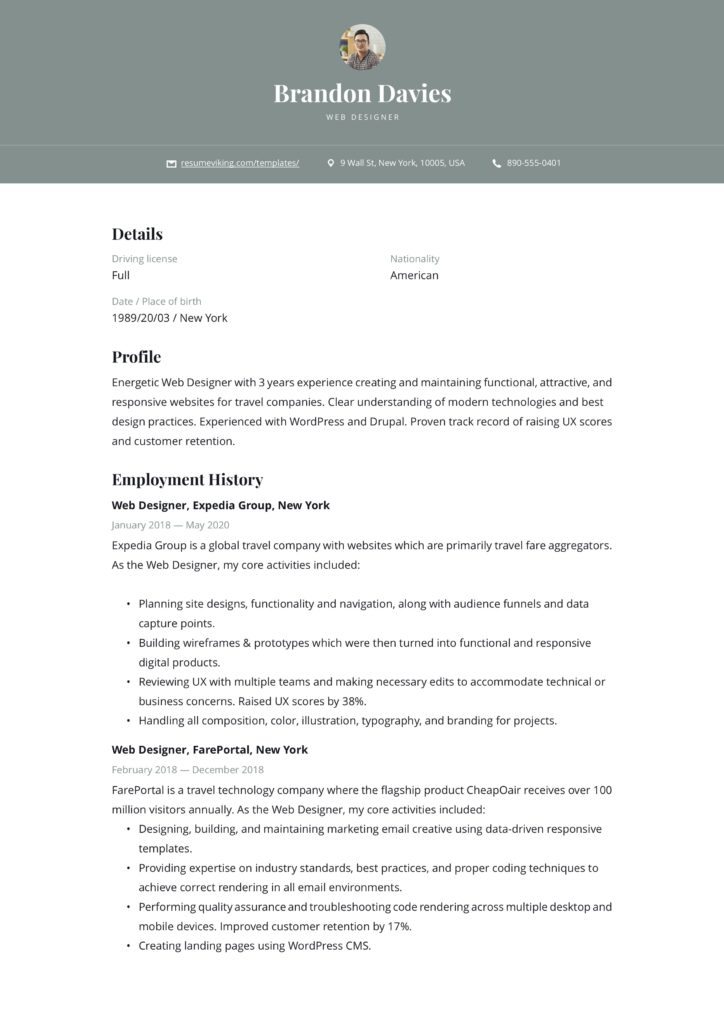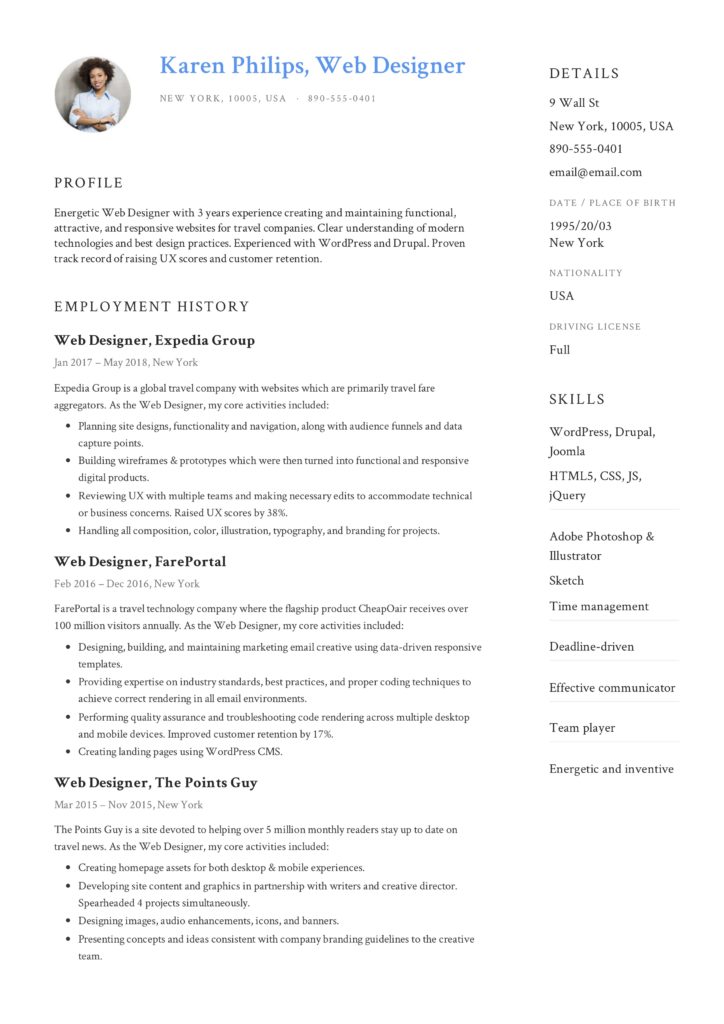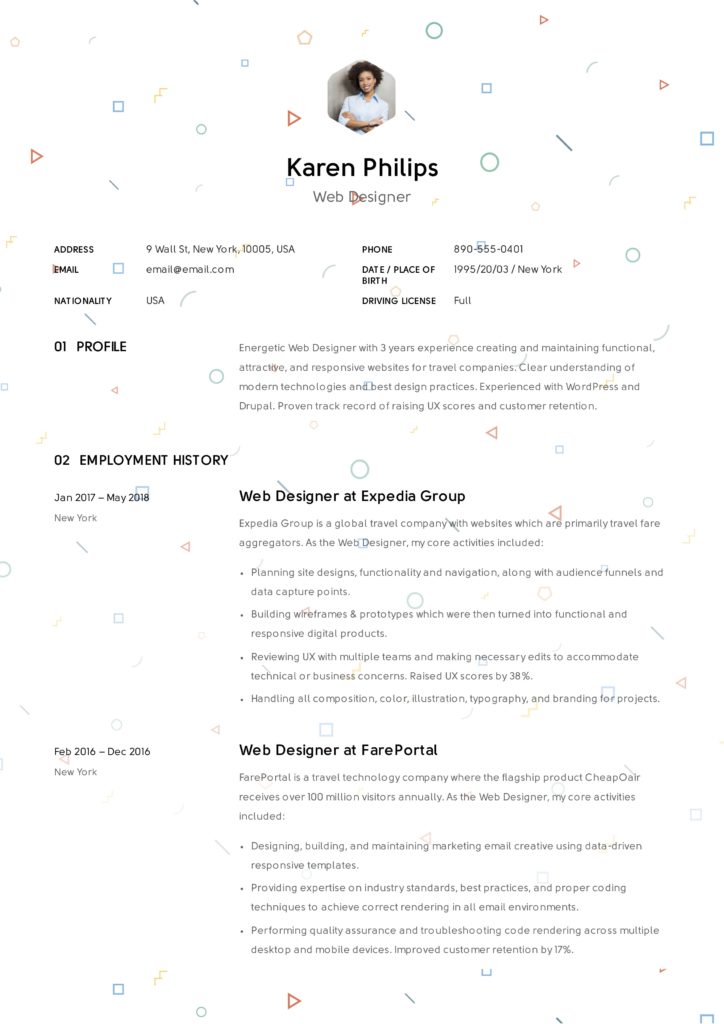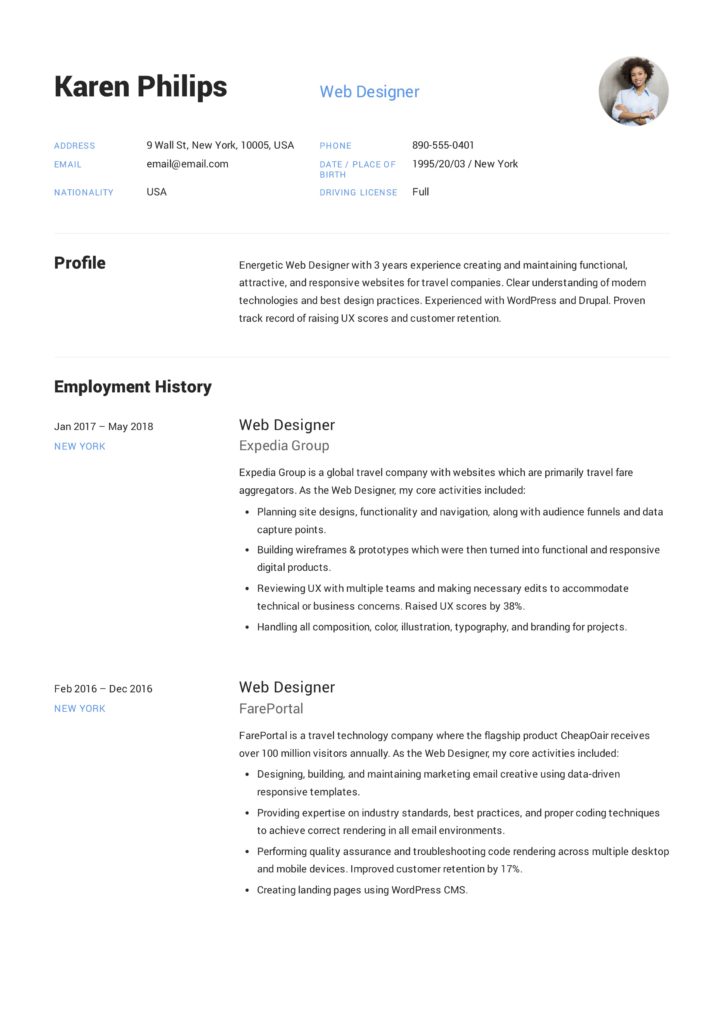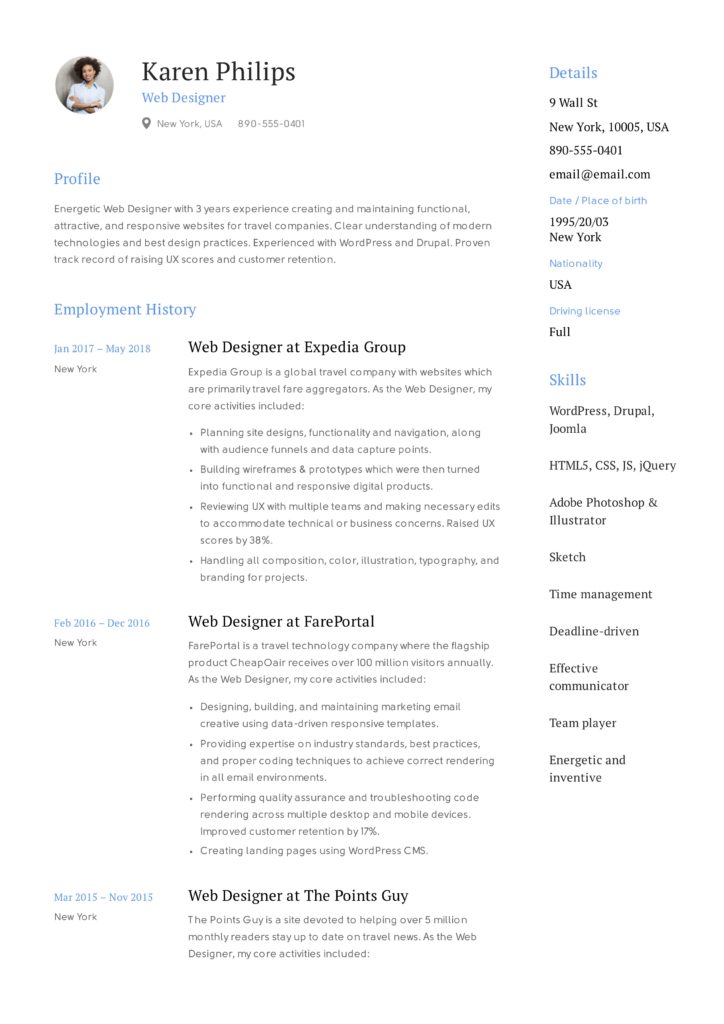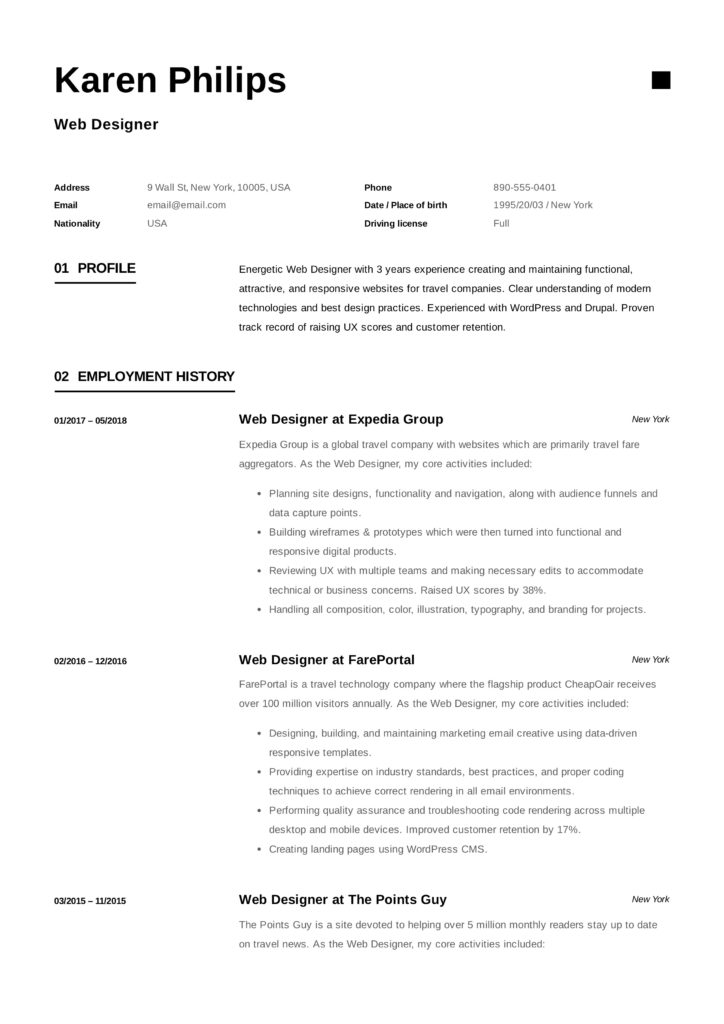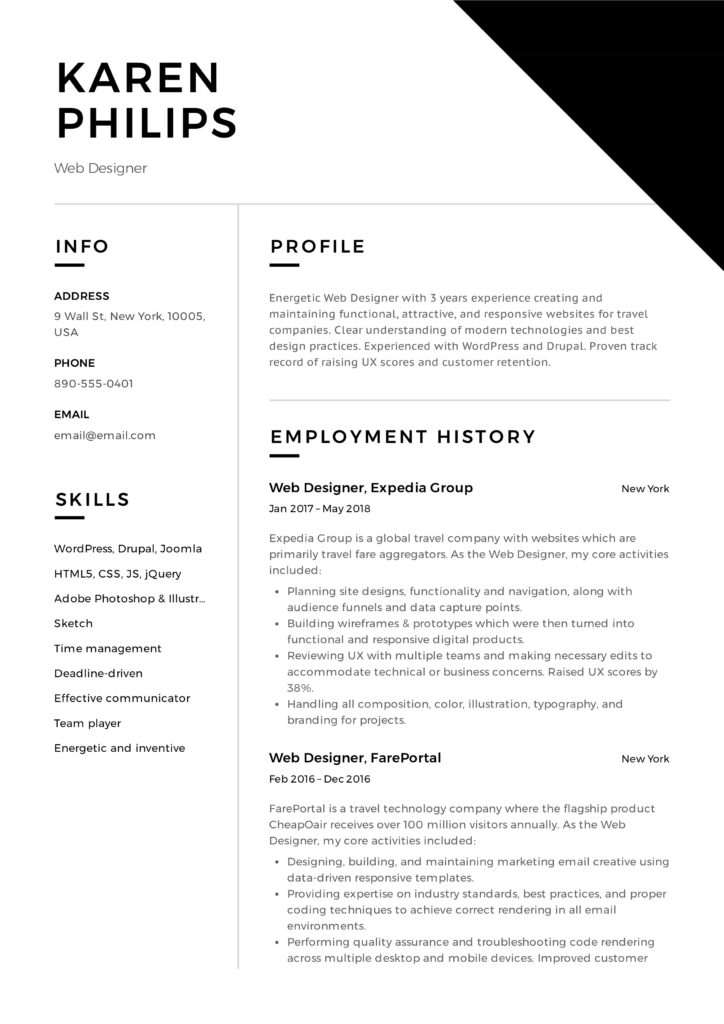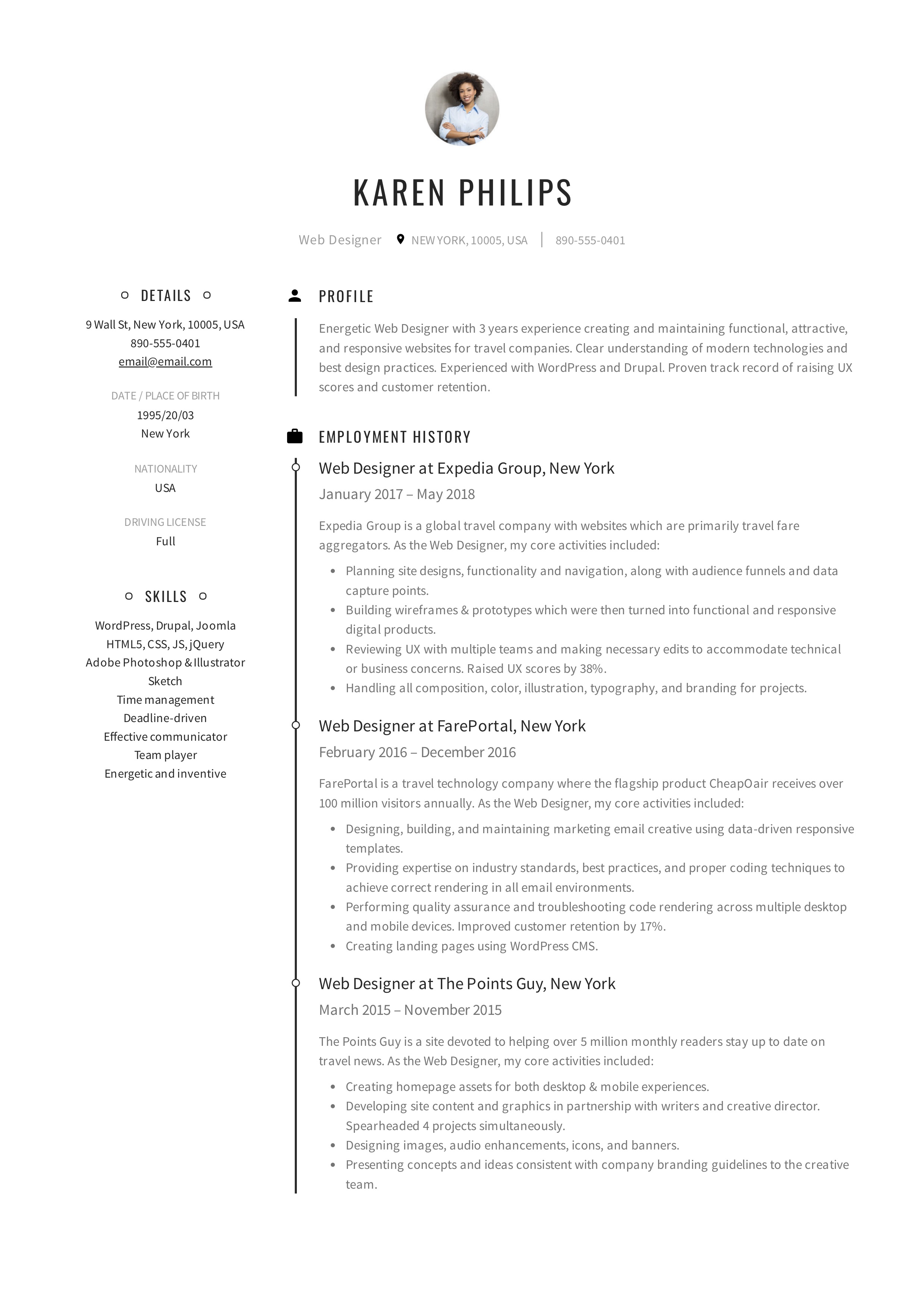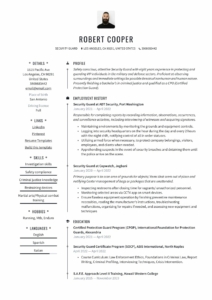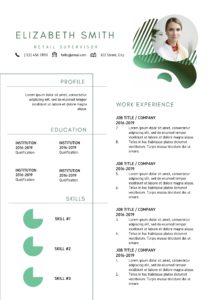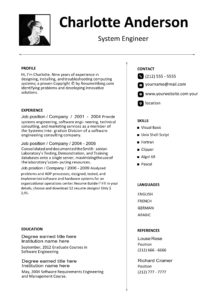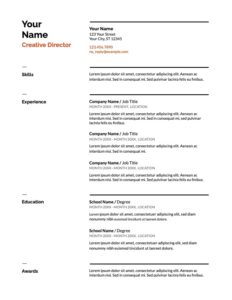Are you a Web Designer having trouble getting your resume up and running?
It happens. Do not worry, here you will learn how to write a uniquely impressive resume, whether it’s for the first time ever or for your yearly resume refresh.
To give you a jump start we made 12 web designer resume samples for you to use.
You’ll also learn all the tips you need to make your skills stand out and outshine your competitors. Your resume won’t have any trouble getting picked from the pile once you are done here.
Go ahead, take a look at these proven Web Designer resume examples to inspire your own.
What you can read in this article
18 Web Designer Resume Examples
The Great Web Designer Resume Guide
Resume Sections:
1. Contact Information:
- Name
- Address
- Phone Number
- Be sure to include alternative contact channels like your LinkedIn profile or Facebook URL details.
2. Profile:
1 – 3 sentences giving a broad overview of your background, years of experience as a Web Designer and the industries you have worked in.
3. Employment History:
Showcase your employment history and include a list of your daily responsibilities and achievements.
4. Education/ Certifications/ Coursework/ Training:
A bachelor’s degree in fields related to computer science, human-computer interaction, web design, or interaction design.
5. Key Skills:
List of key skills that you possess that align with the job descriptions you are applying for. For a Web Designer, these should include frontend development (HTML, CSS, JavaScript, jQuery) and graphic design and/or prototyping software (Photoshop, Illustrator, Sketch, inVision, etc.)
What to Highlight in Your Web Designer Resume
There are a few key things that employers need to know about your background and skills in order to determine if you are what they are looking for.
As a Web Designer, you are proficient in both front-end development and graphic design, while also being knowledgeable in usability and user experience.
With such a broad description, it is best to specify which tools, languages, and industries you are most experienced in. This way employers can narrow you down and see you as an expert who can take care of their specific problem.
For example, have you worked with WordPress websites or do you focus on Joomla? Can you design responsive web apps for iOS or just Android?
Are you proficient in Adobe Photoshop or do you use different design software? Do you apply your web design skills across all industries or just eCommerce websites? Are you a freelancer or do you work at agencies?
The more specific you are in your resume, the better you’ll match with a certain job offer, and the happier you’ll be when you actually get the job!
How to Write a Web Designer Career Objective
The truth is hiring managers have to go through dozens of resumes a day. They don’t have time to read every word on every single resume, including yours. The trick is to put the most important information first to capture their interest and to be as concise as possible.
When looking at your resume, the first thing they will see is your career objective. This is where the key information about yourself should be to capture their interest.
Start it off with your years of experience as a Web Designer and the main duties you perform. When deciding which duties to add, use the job description as your guide.
For instance, if the job you are applying to emphasizes expertise in wireframing websites and creating visual imagery using Adobe Photoshop, mention them in your objective. Use the same words and phrases they do to make it seem like you are meant for the job.
Next, add a line that showcases any outstanding qualities that will help the company. A hiring manager would be interested to know if you have experience working in an Agile environment or are knowledgeable in the CMS they’re using. It’s important to note that these qualities should be proven in the professional experience section.
Lastly, close with bonus skills, certifications, or even a sentence that reinforces the value you can offer them if they were to hire you.
Web Designer Career Objective Example:
“Team-oriented Web Designer with 2 years of experience creating usable, responsive websites for online news and media agencies. Highly skilled in wireframing, designing, and developing creative digital experiences for Joomla and WordPress with a strong focus on delivering exceptional UX.”
Web Designer Job Description & Responsibilities
These are the general responsibilities of a Web Designer that you should include in your employment history:
- Developing intuitive, usable, and engaging interactions and visual digital designs across the web and mobile platforms.
- Creating website layouts and user interfaces using standard HTML/CSS practices.
- Collaborating with cross-functional teams to produce graphical resources in line with branding.
- Identifying user experience problems and translating them into actionable items to solve business problems.
- Crafting wireframes, mockups, site/flow maps to define the user experience.
- Communicating and assisting various departments throughout the design and production process.
- Implementing, testing, and maintaining new functionalities and features across websites.
- Maintaining software documentation throughout project lifecycles.
The Additional Skills Section
In a Web Designer resume, a lot of emphases will be put on the additional skills section. This is a great place to showcase your soft skills which can give you an advantage over your competition.
Web Designers with a talent for user testing, creative problem-solving, and giving confident presentations are seen as valuable additions to the company. Moreover, if you are a highly-experienced applicant, you may want to consider including a Qualifications Summary on your resume instead.)
Quantifying Your Resume
Employers love measurable statistics because it makes your experience more impactful. Here are a few numbers you can include in your resume:
- How many projects or clients did you handle a month?
- By how much did you improve a specific KPI?
The Importance of Soft Skills
For Web Designers, soft skills are just as important as experience. Your role is to integrate user requirements and business goals into beautiful, usable, and functional digital experiences.
You also have to be a great communicator and problem-solver. To show employers that you have the soft skills they are looking for, try to incorporate these into your profile, key skills, and cover letter sections:
- Detail-oriented
- Creative
- Analytical
- Collaborative
- Communication
Action Verbs for your resume
Employers are looking for a Web Designer with exceptional attention to detail and a passion for creating functional and aesthetically pleasing user experiences. Help potential employers envision you as the perfect candidate by using these specific action verbs:
| Designing | Researching | Presenting |
| Leading | Testing | Developing |
| Building | Communicating | Implementing |
| Collaborating | Improving | Recommending |
| Planning | Reviewing | Troubleshooting |
Related Cover Letters & Thank you note
A stunning resume solidifies its landing on the recruiter's desk when it's accompanied by a Cover Letter. Want to prepare for your interview? Then you might be looking for a good Thank You note to send them afterward.
